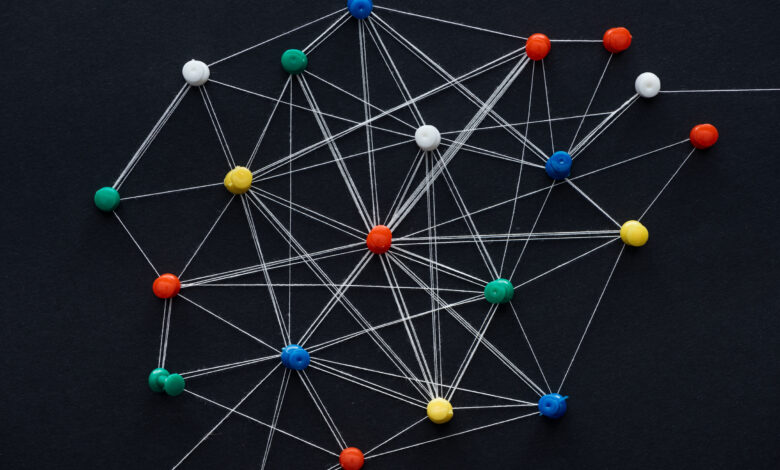
The Rise of Knowledge Graphs in AI
In the rapidly evolving landscape of artificial intelligence, knowledge graphs (KGs) have emerged as a critical infrastructure component for developing truly intelligent agentic systems. As we push beyond the capabilities of standalone large language models (LLMs), the integration of structured knowledge repositories with generative AI creates hybrid architectures that combine the best of both worlds: the creative fluency of LLMs with the factual precision and relational context that knowledge graphs provide.
Knowledge graphs serve as the “world models” for next-generation AI agents, embedding explicit ontologies and cross-domain entity linkages that ground LLM outputs in verifiable facts. This integration addresses one of the most persistent challenges in deploying AI systems: hallucination. By supplying LLMs with structured facts and relationships, knowledge graphs enable real-time verification of generated content, dramatically reducing the rate at which AI systems produce plausible but factually incorrect information.
Solving Identity Resolution and Contextual Understanding
My work in identity resolution and knowledge graph architecture has demonstrated how these technologies fundamentally transform our approach to contextual understanding. Rather than treating each interaction as isolated, graph-based entity resolution merges disparate data sources into unified nodes representing customers, products, or locations.
This capability enables AI agents to maintain consistent, cross-session profiles that are crucial not only for personalization but also for regulatory compliance across industries.
Hybrid Reasoning: KGs and LLMs in Tandem
The real power emerges when knowledge graphs and LLMs operate as complementary systems rather than competitive alternatives. In hybrid LLM-KG reasoning pipelines, knowledge graphs generate candidate fact chains or reasoning skeletons which LLMs then validate, paraphrase, and extend.
This two-step workflow combines the exactitude of graph traversal with the expressive power of generative models, creating systems capable of both precision and adaptability.
Episodic and Semantic Memory Integration
One particularly promising development is the integration of semantic and episodic memory through working memory graphs. Architectures like AriGraph couple semantic knowledge with episodic “working memory,” allowing agents to recall past interactions, contextualize new inputs, and maintain coherent multi-step dialogues.
This represents a significant leap toward AI systems that can genuinely understand the context of conversations rather than merely predicting the next token in a sequence.
Real-World Applications: Identity and Data Management
For organizations managing vast customer datasets, knowledge graphs offer unprecedented capabilities for identity resolution. By identifying and clustering relationship patterns, graph-based approaches can merge duplicate customer records and create comprehensive 360° customer views.
This capability is transformative for customer data management, enabling personalized marketing and robust fraud detection systems that operate across historically siloed data sources.
Scaling with Semantic Compression
The scalability challenges of working with large knowledge bases are being addressed through semantic compression frameworks. These frameworks condense large subgraphs into compact, query-optimized summaries.
This ensures that agents can load only the most relevant KG slices into limited LLM context windows, making real-time reasoning over vast knowledge bases practical for production environments.
What-If Analysis and Counterfactual Reasoning
Perhaps most exciting is how knowledge graphs enable counterfactual “what-if” analysis and scenario planning. By manipulating nodes and edges in parallel subgraphs, AI agents can conduct sophisticated reasoning about hypothetical scenarios without altering production data.
This capability powers strategic simulations and risk assessments that would be impossible with traditional predictive models.
Cross-Industry Impact
The business impact of these technologies extends across sectors. In biomedical research, AI teams have leveraged knowledge graphs to interlink vast biomedical datasets, reducing the time required for gene-target evaluation in areas like Alzheimer’s research from weeks to days.
In customer data management, knowledge graph approaches have enabled organizations to identify and merge duplicate customer records through relationship-based clustering, delivering unified customer profiles for personalized engagement strategies.
As we continue to develop and deploy agentic AI systems, knowledge graphs will increasingly serve as the foundational layer that enables these systems to reason reliably about complex domains, maintain consistent understanding across interactions, and generate outputs grounded in verifiable facts.
The future of AI isn’t just about larger language models – it’s about smarter integration of structured knowledge and generative capabilities into systems that can truly understand the world they operate in.





